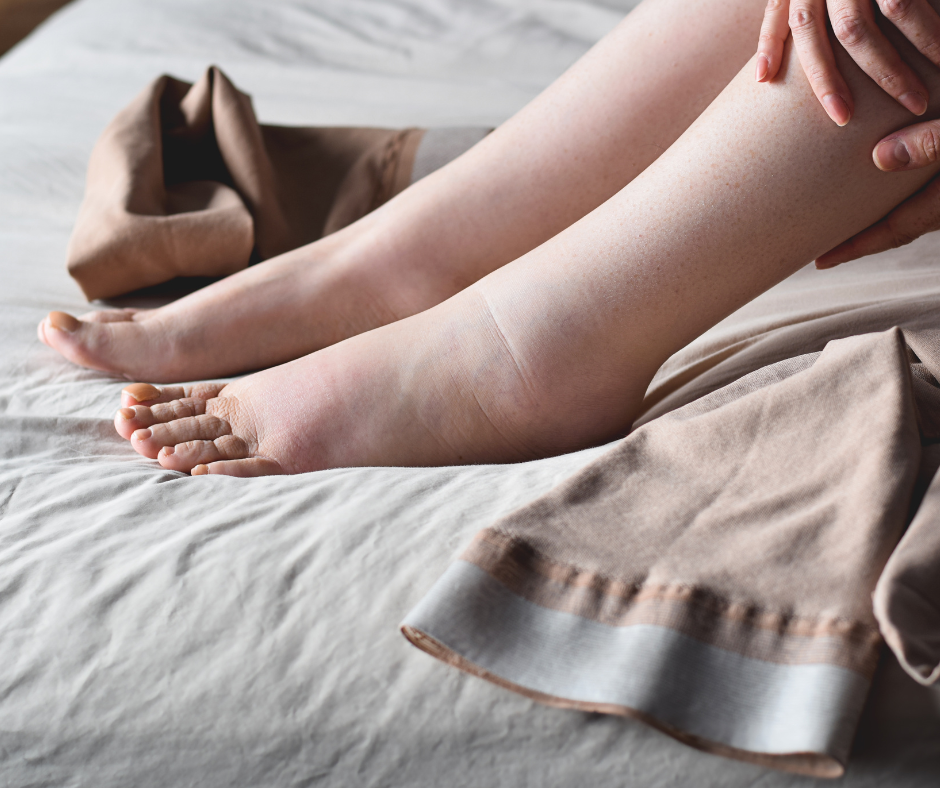Swollen Legs? You’ll Need More Than a Massage!
Do you struggle with persistent swelling in your legs, ankles, or feet? If the swelling is accompanied by a feeling of heaviness or tightness, it could be a sign of a chronic medical condition called Lymphedema. And while you might think a trendy MLD massage is all you’ll need to fix the issue, the reality is more complicated than that.
Understanding this condition is the first step toward managing it effectively and preventing serious complications. For this blog, Reconstructive Foot & Ankle Institute will walk you through what lymphedema is, its common causes, and the balance between at-home care and professional treatment.
What is Lymphedema and What Causes It?
Lymphedema is tissue swelling caused by a buildup of protein-rich fluid that is normally drained through the body’s lymphatic system.
- When this system is blocked or damaged, the fluid accumulates, most commonly affecting the legs and feet.
Several underlying health issues, or comorbidities, are often linked to lymphedema:
- Post-Cancer Treatment: Treatments that involve the removal or damage of lymph nodes can disrupt the lymphatic system’s drainage capacity.
- Morbid Obesity: Significant excess weight can physically compress lymphatic channels, blocking the flow of fluid.
- Chronic Venous Insufficiency: Weakened veins in the legs can lead to fluid buildup and secondary lymphedema.
If left untreated, severe lymphedema can increase the risk of skin infections, lead to skin breakdown, and impact your ability to move comfortably.
DIY Options and Routine Checks
Managing lymphedema requires a consistent, daily effort. Finding the right balance between what you can do at home and when you need a podiatrist’s help is key to success.
Self-care is a vital part of any lymphedema treatment plan. This might include:
- Careful Skin Care: Keeping the skin clean and well-moisturized helps maintain its integrity and prevent infections.
- MLD Massages: Manual lymphatic drainage is a massage technique that is used to guide excess fluid toward lymph nodes that are functioning.
- While it can be effective, it’s used for SYMPTOM MANAGEMENT. MLD is NOT going to “cure” your lymphedema!
- Gentle Exercise & Elevation: Light movement and elevating the affected limb can help encourage fluid drainage.
While such efforts are certainly an essential part of treatment, managing lymphedema on your own can be challenging.
- It’s difficult to achieve the correct, consistent compression needed to effectively control the swelling.
- Without a proper diagnosis, you might be missing a more serious underlying issue.
Why a Podiatrist is Your Best Partner
A podiatrist provides two crucial elements for successful lymphedema management: an accurate diagnosis and access to effective, medical-grade treatments.
1.) Professional Diagnosis: As mentioned, we can confirm that your swelling is lymphedema and rule out other potential causes.
2.) Prescription-Grade Compression: This is the cornerstone of lymphedema treatment!
- Most insurance plans cover medical compression garments, which are far more effective than anything available over-the-counter.
- We can supply you with the right tools, from multi-layer compression wraps to advanced garments like the EXTREMIT-EASE®.
- This innovative garment uses a simple zipper and bungee system, making it easy for patients to apply and adjust, even with dexterity issues.
Dealing with lymphedema? There’s no need to struggle on your own. Reach out and let us help you find relief! Remember Dr. Michaels’ Motto:
If It’s Below the Knee, Think of Me!
Reconstructive Foot & Ankle Institute, LLC offers comprehensive podiatric services. Call us at 301-797-8554 or contact us to schedule an appointment. Located in Hagerstown & Frederick, MD, we’re ready to meet any of your foot health needs.


